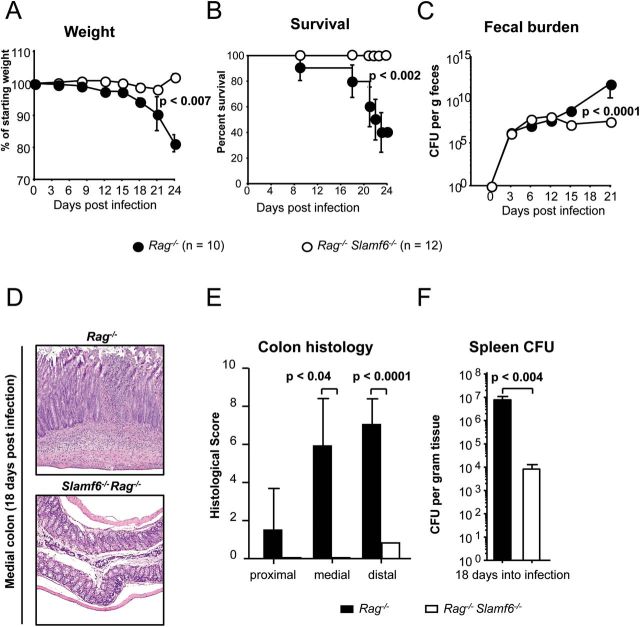Fig. 4.
Slamf6 −/− Rag −/− mice are resistant to C. rodentium-induced colitis, while Rag −/− mice are not. Rag −/− and Slamf6 −/− Rag −/− mice were infected by oral gavage of 2×109 C. rodentium bacteria. The animals were checked daily and sacrificed when their weight dropped below 80% of their starting weight. (A) The weight of individual mice was measured every 3 days and represented as a percentage of their weight on the day of infection. (B) Survival of infected Rag −/− and Slamf6 −/− Rag −/− mice. (C) C. rodentium counts of fecal pellets that were obtained directly from mice every 3 days. Serial dilutions were made in PBS and plated on MacConkey plates. Counted bacterial colonies are represented as CFU per g feces. (D) H&E staining of representative longitudinal sections of the medial colon of Rag −/− and Slamf6 −/− Rag −/− mice, 18 days after infection. (E) Histological score of proximal, medial and distal colon longitudinal sections, 18 days after infection. An independent pathologist performed scoring blind. Maximal scores were 13, judged by mononuclear cell infiltration (3), epithelial integrity (4), hyperplasia (4) and edema (2). (F) C. rodentium counts of spleen homogenates. Serial dilutions were made in PBS and plated on MacConkey plates. Counted bacterial colonies are represented as CFU per g spleen tissue.

